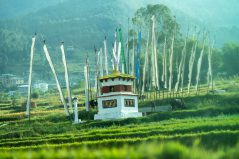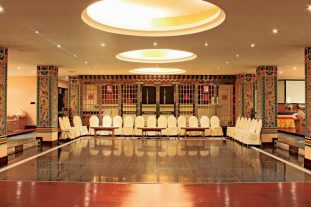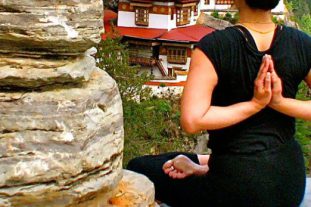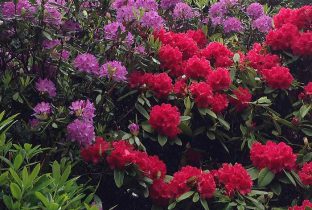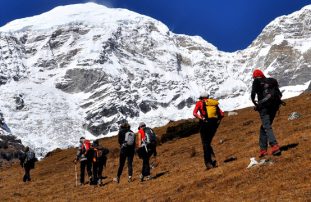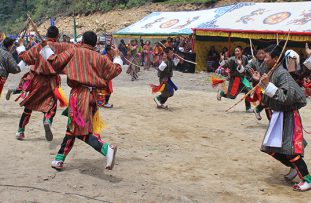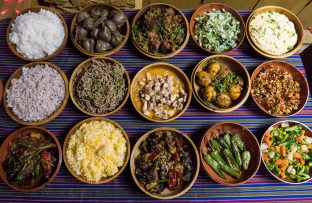Cultural & Heritage Packages
14N/15D
About Tour
Bhutan is the only country in the world to have adopted Mahayana Buddhism in its Tantric form as its official religion, is known as a country of devout Buddhists, the teachings of Buddhism remain strong in all aspects of people’s life even today.
Cultural heritage is an extremely important aspect of Bhutan and is one of the four pillars of Gross National Happiness Bhutan has long maintained a policy of strict isolationism, both culturally and economically, with the goal of preserving its cultural heritage and independence. Only in the last decades of the 20th century were foreigners allowed to visit the country, and only then in limited numbers. In this way, Bhutan has successfully preserved many aspects of its culture, which dates directly back to the mid-17th century.
The country retains its own unique traditions, and large numbers of cultural heritage and traditional techniques still play a significant role in people’s everyday lives. Typical tangible cultural heritage in Bhutan includes Dzong (building doubles as prefectural office and monastic center), Lhakhang (temples), Gompa (monastery), Chorten (Buddhist stupa), and old folk houses. Movable assets are represented by Buddhist-related such as Buddhist statues, paintings and scriptures. The most well-known intangible cultural heritage are a Tibetan Buddhist mask dance called Cham, a yearly festival called Tsechu, and traditional arts and crafts such as textiles.
Itinerary Highlights
- Day 01: Arrival Paro, Paro - Thimphu
- Day 02: Thimphu – Punakha (Sightseeing)
- Day 03: Punakha – Trongsa – Bumthang
- Day 04: In Bumthang- Sightseeing
- Day 05: Bumthang – Tang valley – Bumthang
- Day 06: Bumthang – Bumthang
- Day 07: Bumthang – Mongar
- Day 08: Mongar –Trashigang
- Day 09: Trashigang - Mongar
- Day 10: Mongar – Bumthang
- Day 11: Bumthang – Gangtey
- Day 12: Gangtey – Thimphu
- Day 13: Thimphu – Haa – Paro
- Day 14: Paro – Hike to Taktsang Monastery ‘Tiger’s Nest’ (3120m)
- Day 15: Departure from Paro
Day -1 (Arrive Par, Paro - Thimphu)
Desc:- Arrival at Paro International Airport, after flying over some of the most scintillating views of the Himalayan Region our tour guides will welcome and receive you right after completing airport arrival formalities and then drive you to Thimphu – Sightseeing in Thimphu. On the way to Thimphu, we stop at Tachogang Lhakhang Bridge for a photo session, before the mid of the route to Thimphu, which is located opposite to the main highway. After arriving to Capital city, Thimphu, visit the Buddha Dordenma in the afternoon, which is a gigantic statue of Shakyamuni Buddha overlooking the Thimphu Valley. Then, we will visit the Heritage Museum, which is housed in a large house built 300 years ago. The day finally ends with a visit to Tashichho Dzong, which is a Buddhist Monastery cum fortress built in 1216.
Day -2 (Thimphu – Punakha (Sightseeing)
Desc:- After completing breakfast at hotel, Visit the Memorial Chorten, which was built in the memory of the late Druk Gyalpo, Jigme Dorji Wangchuck in 1974 followed by visiting Takin Zoo in Motithang, to see the the national animal of Bhutan, and looks like a cross between a cow and a goat. Once this is completed, we drive to Punakha which is around 77 Kms from Thimphu. The drive will takes us crossing Dochula Pass at 3,100 meters. Where we will stop to get a panoramic view of the high snow-capped mountain peaks during clear sky days except for the days of monsoon period where the weather is cloudy and foggy. Arrive in Punakha and lunch at the one of the most happening restaurants in Punakha Town or at hotel (option).
After lunch, we pay a visit to the Punakha Dzong, a fortress constructed in 1637 by the Zhabdrung Ngawang Namgyal, is one of the most photogenic of all Bhutan's ancient fortresses, which is also the second oldest and largest dzong in Bhutan. Cantilever Bridge next to Punakha dzong– We cross the cantilever bridge to the other side of Po Chhu River to the other side. This wood covered bridge gives us a lovely view of the immediate surroundings. Then visit Chimi Lhakhang –five kilometers to the east of Punakha Dzong, It is a temple dedicated to Drukpa Kunley, affectionately called the divine madman. Night hold at the hotel in Punakha.
Day - 3 (Punakha – Trongsa – Bumthang)
Desc:- After early breakfast it will take seven-hour drive to Bumthang via Trongsa. In Trongsa, stop off at the large Trongsa Dzongs which was built in 1513 for sightseeing and photo. Then we continue journey to Bumthang. On arrival check in to hotel followed by dinner at hotel.
Day - 4 (In Bumthang- Sightseeing)
Desc:- The whole day will be spent sightseeing inBumthang starting by visiting Member Tsho (the burning lake) a place where some of Guru Rinpoche's scriptural treasures were discovered in the 15th century by the famous treasure discover Pema Lingpa. Then visit Kurjey Lhakang, a very sacred site. It has three revered temples, Guru Lhakhang, Sampa Lhundrup Lhakhang, and Ka Gon Phor Sum Lhakhang, surrounded by 108 chorten walls. Next visit, Jakar Dzongs which is next to town and Jambay Lhakhang one of the most ancient temples in Bhutan. Khamsum Yuley Namgyal Chorten, a monument dedicated to the King of Bhutan. The next stop will be Punakha Suspension Bridge, one of the longest suspension bridge in Bhutan, An almost 250 m long suspension bridge across the Phochu river.
Day - 5 (Bumthang – Tang valley – Bumthang)
Desc:- Visit to Tang Valley. It is an eleven Km drive from Bumthang, Visit Pema Tekchok Choeling Shedra, a large nunnery where stop for the view and then move to Ta Rimochen Lhakhang and pay a visit to the temple. Then visit the village of Ogyen and back to Bumthang.
Day - 6 (Bumthang – Bumthang)
Desc:- Drive to Ura Valley and Village in Bhutan which is in close proximity to Bumthang. Its main attraction is the Ura Dzong and the medieval atmosphere that prevails in the villages there, The town is famous for the Matsutake Festival that is organized every August. The festival celebrates the mushroom season. After sightseeing the valley of Ura, drive back to Bumthang.
Day - 7 (Bumthang – Mongar)
Desc:- Drive to Mongar from Bumthang, 192 kms (7 hours), from Jakar the road follows the east bank of Chamkhar chu and climbs up the ridge to Tansibi village, Ura then goes through the Thrumsingla National Park, on a clear day Gangkar Phuensum, Bhutan’s highest peak can be seen from here, then the road takes a steep descent into Kuri chu valley, the road passes rock cliffs, numerous waterfalls and streams leaving the Park area and emerging to Kuri chu valley. The area is good for bird watching, Arrive at Mongar, located on a top of a hill, night stay at hotel.
Day - 8 (Mongar –Trashigang)
Desc:- Drive to Trashingang from Mongar, which is around 92km/3 hours. En-route take an excursion to Drametse Goemba. The road from Mongar climbs past fields, to Kilikhar with its Buddhist college (shedra) and then continues along the side valleys of Drangme Chhu river to Chazam (meaning iron bridge, named after chain bridge, built in 15 century, which stood here once). Chazam, it’s the junction for road to Gomkora and beyond to Tashiyangste. From Chazam, its about 20 minutes to Trashingang and pay a visit to the Trashigang Dzong. After this check into a hotel.ntury, when Buddhism was first introduced into Bhutan. Evening visit to local shops. Overnight at the hotel in Bumthang.
Day - 9 (Trashigang – Mongar)
Desc:- Return back to Mongar, taking slow and enjoying the valley and views on the way back.
Stay at hotel in Mongar.
Day - 10 (Mongar – Bumthang)
Desc:- Retrace back to Bumthang, taking in the rural setting as on the way. Night stay at hotel in Bumtang.nd is the unofficial symbol of Bhutan. It is about a 2-to-3-hour, totally uphill hike from the parking lot to the monastery.
Day - 11 (Bumthang – Gangtey )
Desc:- After breakfast drive to Gangtey, passing Tashi-la Pass. In Gangtey, pay a visit to the Gangtey Gompa Lhakhang on the hilltop. Night at the hotel.
Day - 12 (Gangtey - Thimphu)
Desc:- From Gangtey to Thimphu, visit to Wangdi town and pass by Wangdi Dzong and also stop at Dochula pass.
Day - 13 (Departure from Paro)
Desc:- Right after the breakfast, it takes two-hour drive to Haa Valley, which is a pass to the remote part of Bhutan in the North West.
Short walk will take you across the most scenic views of the valley and the alpine Pass.
After enjoying excursion in Haa Valley, return to Paro and night stay at hotel.
Day - 14 (Paro – Hike to Taktsang Monastery ‘Tiger’s Nest’ (3120m))
Desc:- Drive to the base of Taktsang Monastery and take a two and a half hike up to the Taktsang Monastery, through some groves of pine and rhododendron trees with views of the surrounding land changing increase in elevation. It is believed the Guru Rinpoche came flying here on the back of a tigress to meditate for three months.
Aater return to Paro Town and can spend the remaining time around the streets of Paro for shopping and visiting cafes and restaurants.
Day - 15 (Departure from Paro)
Desc:- Early breakfast in the hotel, then drive to the airport for flight to onward destination.
Inclusion and Exclusion
What's included:
- Accommodation at 3 star hotel, Double room on twin sharing basis
- Single room supplement is additional of USD 45 per night per room
- All three meals at designated restaurants or hotels (does not cover water and other beverages ordered in hotels/restaurants)
- Bottled mineral water for the entire trip (except water ordered in the hotels and restaurants)
- English speaking A qualified & licensed guide
- A tour vehicle & an experienced driver
- Entry fees & road permits
- Government fee, royalty, taxes & surcharges
- Visa fee and processing charges
- Full service & assistance before, during and after your Bhutan trip
What's excluded
- Airfare to and from Bhutan (can be arranged with us)
- Flight on other airline to catch Drukair Flight
- Any other beverages (alcoholic or non-alcoholic) including water ordered in restaurants and hotels
- Travel or health insurance
- Wire transfer/Telephone expenses
- Meals at 4-5 stars restaurants
- Hotel stay outside of Bhutan
- Expenditure of personal nature
- Laundry
- Gratuity/Tip for guides and driver
Choose your destination?
Similar Packages
Customize itineraries depending on where you may choose to visit as per your comfort
Feel free to contact us:
Landline No.:
+975-2-323285/32
24/7 Service .:
+975-17/77
Mail Us:
biebsto@biebstoursandtravel.bt
Our Guides
At BIEBS Tours & Travels, our guides are the heart of your Bhutanese experience. Knowledgeable, professional, and passionate, they bring Bhutan’s rich culture, history, and natural beauty to life, ensuring your journey is as enriching as it is enjoyable.
Why Travel with Our Guides?
- Certified Experts
- All our guides are professionally trained and certified by the Tourism Council of Bhutan. Their deep understanding of Bhutan’s traditions, history, and geography guarantees an authentic and well-informed experience.
- Multilingual Skills
- Whether you speak English, Hindi, or another language, our multilingual guides ensure seamless communication and a comfortable travel experience.
- Local Insights
- Being locals, our guides share stories and insights that go beyond guidebooks—offering you a genuine connection to Bhutanese life and culture.
- Personalized Care
- Our guides cater to your interests and pace, ensuring your journey is tailored to your preferences. Whether it’s trekking, cultural exploration, or wildlife spotting, they make your trip truly unforgettable.
- Safety First
- Trained in first aid and safety protocols, our guides prioritize your well-being at every step, especially during treks and adventurous activities.
Meet Bhutan Through Their Eyes
From leading you through the mystical corridors of ancient dzongs to sharing the legends of Bhutanese folklore, our guides are your companions in discovering the hidden treasures of Bhutan.
Explore Bhutan with the Best—Because Every Great Journey Needs a Great Guide.

Plan your trip to Bhutan



